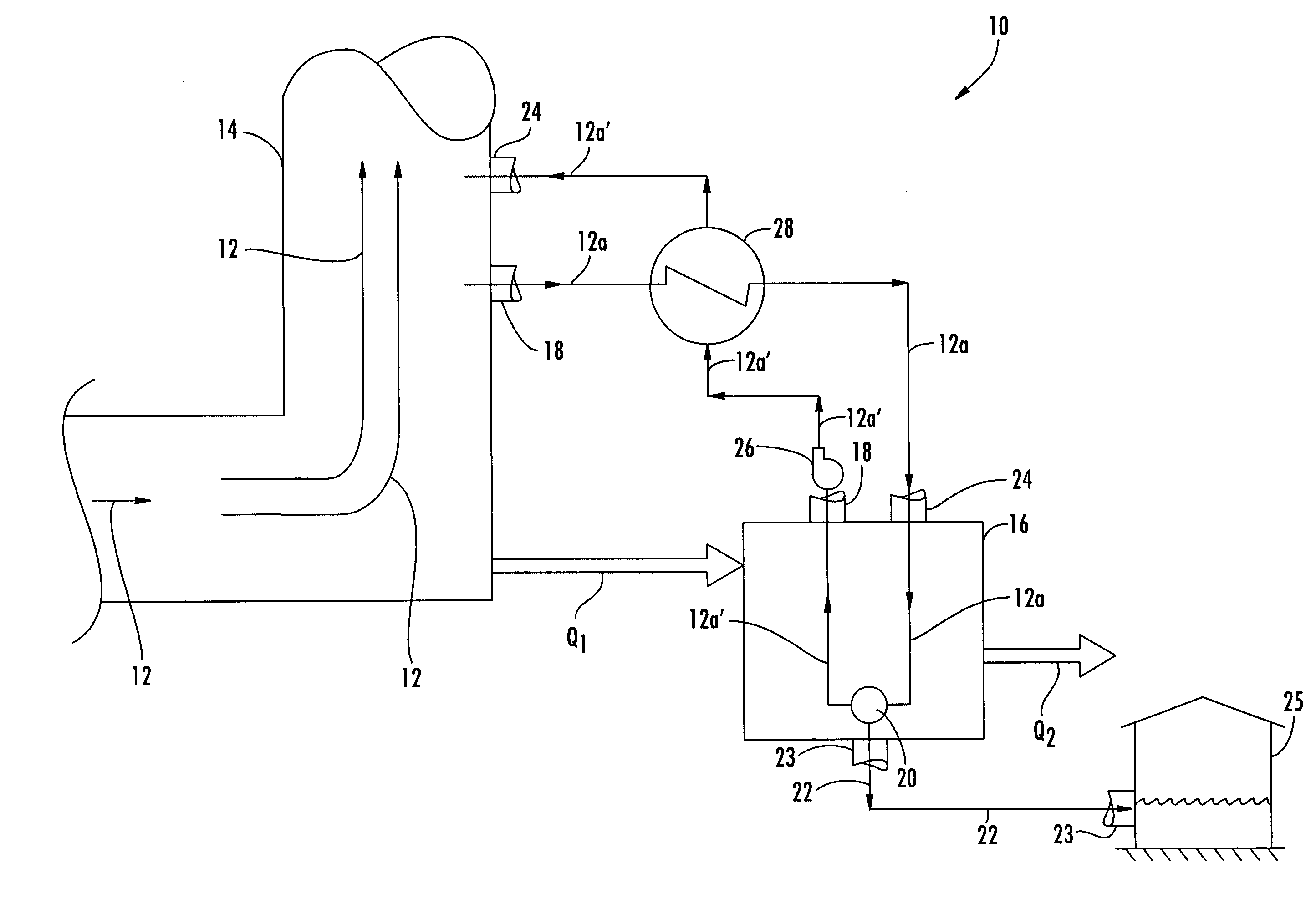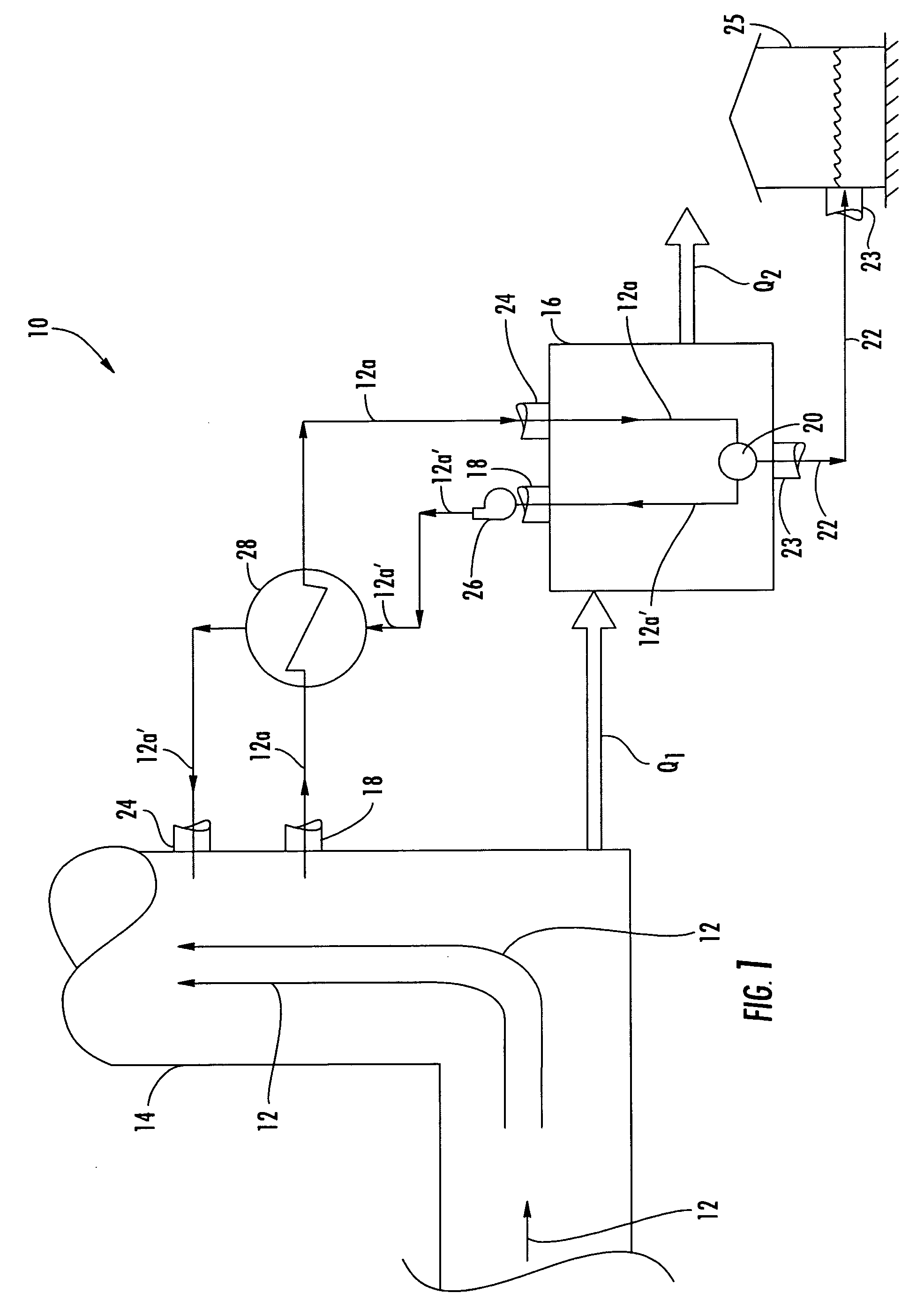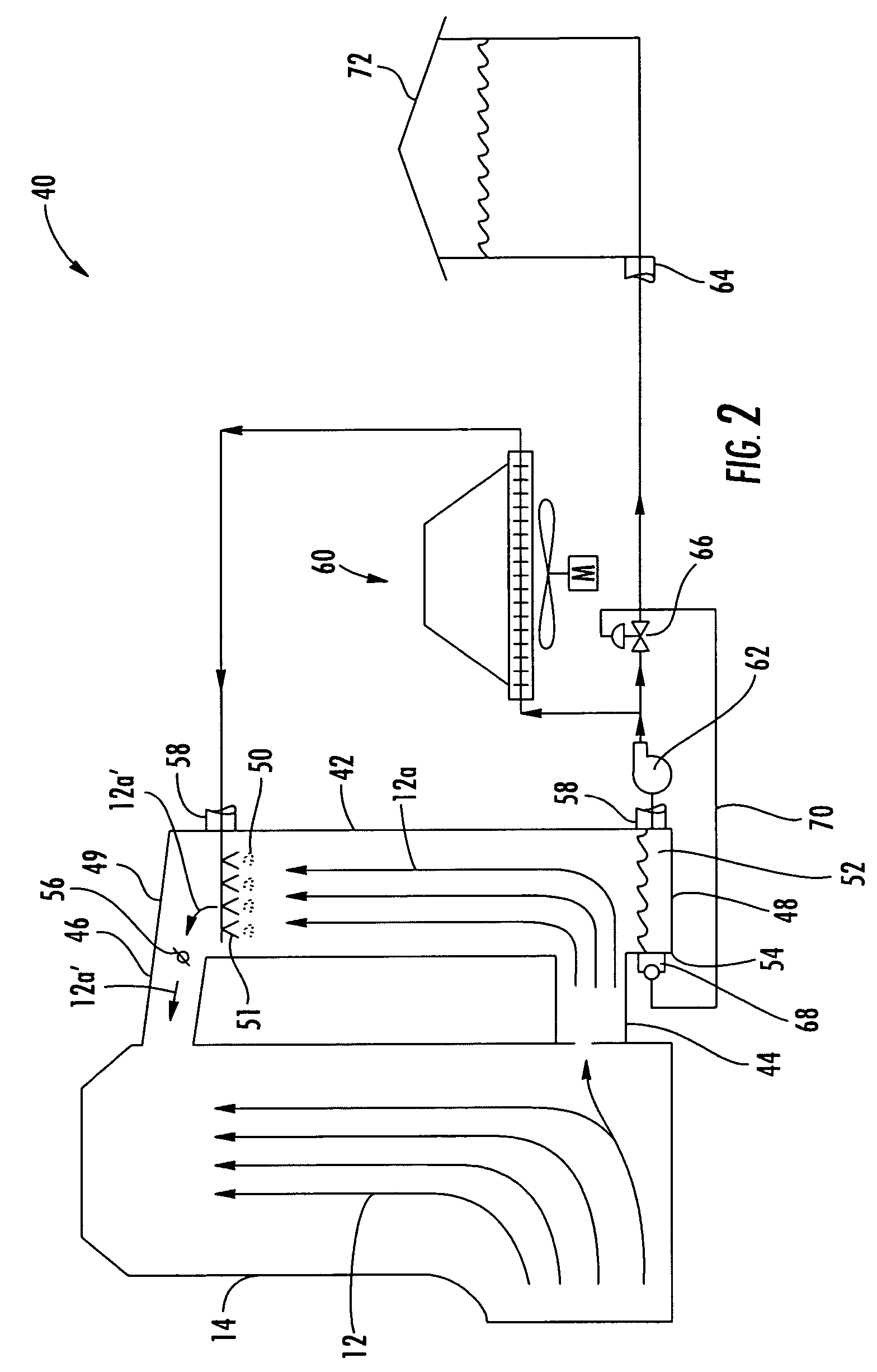Turbine exhaust water recovery system
a gas turbine engine and exhaust water technology, applied in the field of gas turbine engine exhaust water recovery system, can solve the problems of dissuading local decision-makers from building power plants, insufficient amount of freely available water to support plants, etc., and achieve the effect of reducing the effective duty of the absorption chiller and facilitating the movement of gas
- Summary
- Abstract
- Description
- Claims
- Application Information
AI Technical Summary
Benefits of technology
Problems solved by technology
Method used
Image
Examples
Embodiment Construction
[0019]Embodiments of the invention present systems for extracting water from turbine exhaust gases. Embodiments of the invention will be explained in the context of various possible systems, but the detailed description is intended only as exemplary. Embodiments of the invention are shown in FIGS. 1–3, but the present invention is not limited to the illustrated structure or application.
[0020]In a gas turbine engine, fuel and air can be mixed and combusted to produce high pressure, high velocity gas. The gas can be routed to the turbine section of the engine where energy can be extracted from the gas. After exiting the turbine, the gas can be discharged to the environment through an exhaust stack or other exhaust duct. When a hydrocarbon-based fuel, such as natural gas, is used in the combustion process, one constituent of the combustion gas is water vapor. In one engine system, water vapor can be about five percent of the turbine exhaust mass flow. According to aspects of the invent...
PUM
| Property | Measurement | Unit |
|---|---|---|
| temperature | aaaaa | aaaaa |
| temperature | aaaaa | aaaaa |
| temperature | aaaaa | aaaaa |
Abstract
Description
Claims
Application Information
 Login to View More
Login to View More - R&D
- Intellectual Property
- Life Sciences
- Materials
- Tech Scout
- Unparalleled Data Quality
- Higher Quality Content
- 60% Fewer Hallucinations
Browse by: Latest US Patents, China's latest patents, Technical Efficacy Thesaurus, Application Domain, Technology Topic, Popular Technical Reports.
© 2025 PatSnap. All rights reserved.Legal|Privacy policy|Modern Slavery Act Transparency Statement|Sitemap|About US| Contact US: help@patsnap.com



